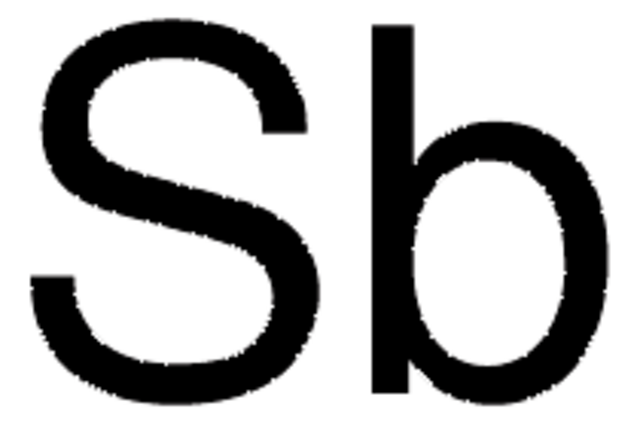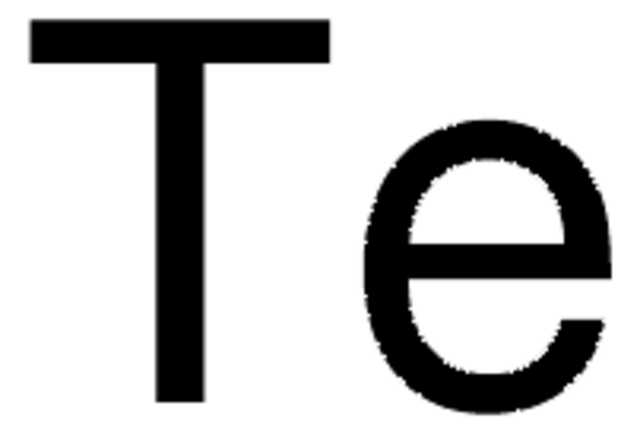GF96258437
Antimony
rod, 20mm, diameter 4.7mm, 99.999%
Synonym(s):
Antimony, SB007906
About This Item
Recommended Products
Assay
≥99.999%
form
rod
manufacturer/tradename
Goodfellow 962-584-37
resistance
41.7 μΩ-cm
bp
1635 °C (lit.)
mp
630 °C (lit.)
density
6.69 g/mL at 25 °C (lit.)
SMILES string
[Sb]
InChI
1S/Sb
InChI key
WATWJIUSRGPENY-UHFFFAOYSA-N
Looking for similar products? Visit Product Comparison Guide
General description
Legal Information
Storage Class Code
13 - Non Combustible Solids
WGK
WGK 3
Flash Point(F)
Not applicable
Flash Point(C)
Not applicable
Regulatory Information
Choose from one of the most recent versions:
Certificates of Analysis (COA)
It looks like we've run into a problem, but you can still download Certificates of Analysis from our Documents section.
If you need assistance, please contact Customer Support.
Already Own This Product?
Find documentation for the products that you have recently purchased in the Document Library.
Our team of scientists has experience in all areas of research including Life Science, Material Science, Chemical Synthesis, Chromatography, Analytical and many others.
Contact Technical Service


